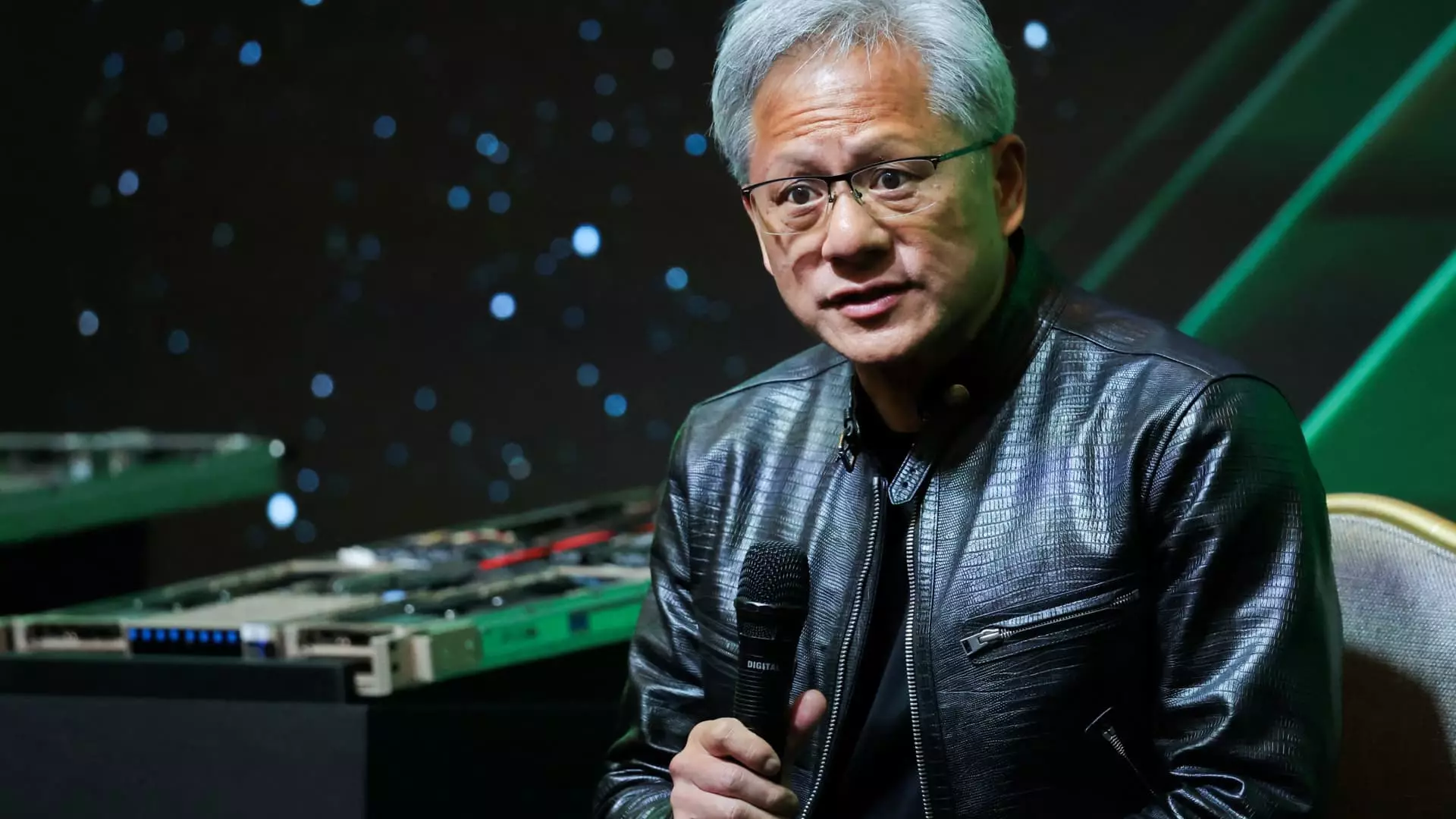In recent years, few companies have captured the imaginations and pocketbooks of investors quite like Nvidia. Once a modest graphics card manufacturer, Nvidia has transformed into a titan of the technology sector largely due to the unprecedented growth of artificial intelligence (AI). The stock’s meteoric rise saw the company’s market cap increase nearly ninefold since late 2022, culminating in a peak that made Nvidia the most valuable public company in the world for a brief period this past June. Since then, however, investors have experienced a turbulent ride, with the stock plummeting nearly 30% over the course of seven weeks, resulting in a staggering reduction of approximately $800 billion in market capitalization.
As of now, Nvidia finds itself rebounding—having recently surged within 7% of its all-time high. With quarterly results set to be announced shortly, Wall Street is on high alert, bracing for potential volatility. Any signs that the overwhelming demand for AI solutions might be fading could have significant repercussions, not just for Nvidia but for the entire market landscape. Eric Jackson from EMJ Capital became the voice of caution when he stated, “If they lay an egg, it would be a major problem for the whole market.” Yet, he remains optimistic about Nvidia’s ability to surprise on the upside.
The company’s impressive trajectory hinges largely on its contribution to the burgeoning AI sector, a theme echoed during the earnings calls of its major tech peers. Giants like Microsoft, Alphabet, and Meta have invested heavily in Nvidia’s graphics processing units (GPUs) to facilitate the training of AI models and manage large-scale workloads. The recent history shows a tripling of Nvidia’s revenue on an annual basis, underscored predominantly by the data center segment. Analysts anticipate another quarter of triple-digit growth, but the expected growth rate is set to moderate to around 112%, compared to previous exuberance.
Such predictions signal not merely a slowdown, but a considerable challenge ahead. As year-over-year comparisons grow less favorable, the euphoria surrounding Nvidia’s growth will increasingly be put to the test. Investors are particularly focused on Nvidia’s guidance for the forthcoming October quarter, anticipating growth of approximately 75%—any deviation from this could signal a worrying trend in customer spending, especially among its crucial cloud clients.
Recent sentiments from major clients reflect a willingness to continue investing heavily in data centers and Nvidia-based infrastructures. Notably, executives from Google and Meta have described their initiatives with enthusiasm, warning that the risk of underinvestment could far outweigh that of overspending. The anticipated financial commitments are staggering; Eric Schmidt, former Google CEO, recently suggested that leading tech companies are seeking upwards of $100 billion in processors alone.
However, beneath this optimistic veneer lies a critical question about the long-term return on investments made in Nvidia’s high-cost technologies. During previous earnings calls, Nvidia’s CFO emphasized that cloud providers could expect a $5 return for each dollar spent on GPUs over a four-year period. Expect more clarification on these ROI metrics in the upcoming earnings announcements, as this information will be pivotal in bolstering investor confidence.
As Nvidia navigates this period of heightened scrutiny and anticipation, significant questions linger concerning the rollout of its next-generation AI chips, codenamed Blackwell. Recent reports of production issues regarding these chips may delay their delivery into the first quarter of 2025—an issue compounded by Nvidia’s previous bullish statements about anticipated revenue from Blackwell. While the current Hopper chip generation maintains a competitive edge in the AI applications landscape, the entrance of competitors like Advanced Micro Devices and Google means Nvidia cannot afford complacency.
Interestingly, even if Blackwell’s launch suffers setbacks, revenue could be merely deferred rather than lost. Sales of Hopper chips, particularly the new H200 variant, could continue to satisfy immediate market demands. Analysts from Morgan Stanley have expressed that this shift won’t significantly affect Nvidia’s near-term performance as current customer demand remains robust for H200.
In closing, Nvidia is at a crossroads. The upcoming financial report has the potential to either quell or amplify investor fears regarding future growth. With its core clients exhibiting optimism, the path forward appears laden with both tremendous opportunity and perilous uncertainty—a duality that defines not only Nvidia’s future but the broader technological landscape it helps to shape.

